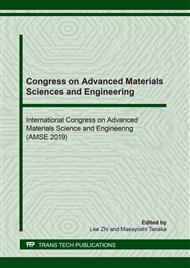p.26
p.33
p.39
p.47
p.52
p.58
p.64
p.70
p.79
Progress in Creation of a New Constant Medium for Hyperpolarized MRI
Abstract:
The MRI (Magnetic Resonance Imaging) has been used as one of the powerful tools for medical diagnoses. Its usefulness is, however, still restricted because of the low spatial resolution and long measuring time mainly due to the low NMR (Nuclear Magnetic Resonance) signals relative to the noise levels. To overcome these restrictions, we started developing a method to remarkably enlarge the NMR signals about 10 years ago. We employ a method to hyperpolarize the nuclei, where the “hyperpolarize” means to artificially generate the nuclear polarization by many orders (102~106) of magnitude higher than the ordinary NMR signals currently in use. The hyperpolarized MRI would enable us to provide images with much higher spatial resolution and shorter measuring time than ever. Several techniques for hyperpolarization have been put into practical use; the BF (Brute Force) method, PHIP (Parahydrogen Induced Polarization) method, Laser optical pumping, DNP (Dynamic Nuclear Polarization), and so on. The experimental study on the hyperpolarization of 3He by the BF method, and that of 19F in PFC (Perfluorocarbon, known as an artificial blood) by the PHIP method has gotten started. In the former method, we use an extremely low temperature realized by the Pomeranchuk cooling in combination with 3He/4He dilution refrigerator and high magnetic field. In the latter method, we use the hydrogenation of the parahydrogen in the unsaturated hydrocarbon substrate at room temperature. Very recently, we started developing a novel type of the hyperpolarized MRI named HMM (Hyperpolarized Metabolic MRI) hoping for the cancer diagnosis.
Info:
Periodical:
Pages:
52-57
Citation:
Online since:
May 2020
Price:
Сopyright:
© 2020 Trans Tech Publications Ltd. All Rights Reserved
Share:
Citation:


